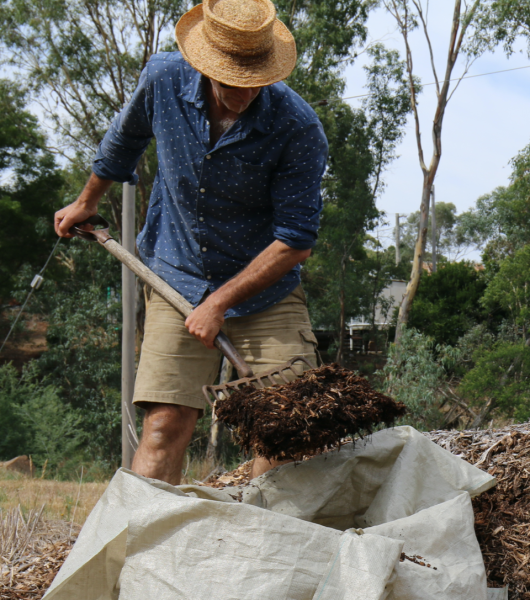Wood chips can contribute to making some of the best and also some of the worst composts, it has a lot to do with how much goes into the compost.
Wood chips are the mulched-up branches and trunks of trees. Most of this woody material is made up of lignin, the hardest, longest-lasting carbon form that plants make. Mulches will also contain leaves in the mix, which are made of cellulose, a more easily broken-down form of carbon.
Wood chips have an extremely high carbon-to-nitrogen ratio, often quoted as being as high as 400:1. Regardless of the exact numbers, wood chips are a very high carbon source, but much of this carbon is not immediately available to the pile early in the composting process.
As the compost microbes get active in a freshly made pile, they will use the more available cellulose much faster than the slower to break down lignin, which require the longer and slower decomposition work of saprotrophic (wood eating) fungi to eventually make the carbon in the lignin available. This may take months (or even years) to fully integrate into the humic substance that we call compost.
Because wood chips are very high in carbon, are cheap, readily available and are handled easily by big machines, they are the preferred carbon-rich ingredient in commercial compost making. But most commercial composts (including most municipal composting facilities) tend to be way too high in wood chips to make great finished compost.
When composts are made with wood chips as the primary (or only) carbon-rich ingredient, piles will often start off quite smelly, as the microbes can’t access enough carbon to balance the high levels of nitrogen-rich food scraps, the carbon is there in the wood chips, but the microbes can’t get to it in its lignin form!
As these kinds of composts mature, the carbon that was locked up becomes more accessible through fungal activity, often ending up overly carbon heavy, nitrogen-starved and looking and feeling like a cooked woody mulch.
This is why many commercial composts look like potting mix (at best) and blackened mulch (at worst).
For home composters, wood chips can be a great addition to our balance of carbon-rich ingredients, but we will also use autumn leaves, straw and garden prunings (all much more cellulose-rich than wood chips) in our recipe, meaning we have fast and slow release carbon in our mix, offering a more balanced diet to our compost microbes, and making better compost as a result.
I like to source aged, moist wood chips, as fungi will have already started to break down the lignin in the wood. I add a sprinkling of these wood chips across thin layers of nitrogen-rich ingredients in my pile, wood chips adding up to no more than five to 10 per cent of the total mix. They add great texture and aeration to the pile, and their slow-release carbon will be feeding the microbes in the pile for months to come.
– Joel Meadows works with *Yes In My Back Yard, (YIMBY), a community-scale composting initiative in Castlemaine and surrounds. Send questions or comments to hello@yimbycompost.com, or to book in for a compost workshop.








